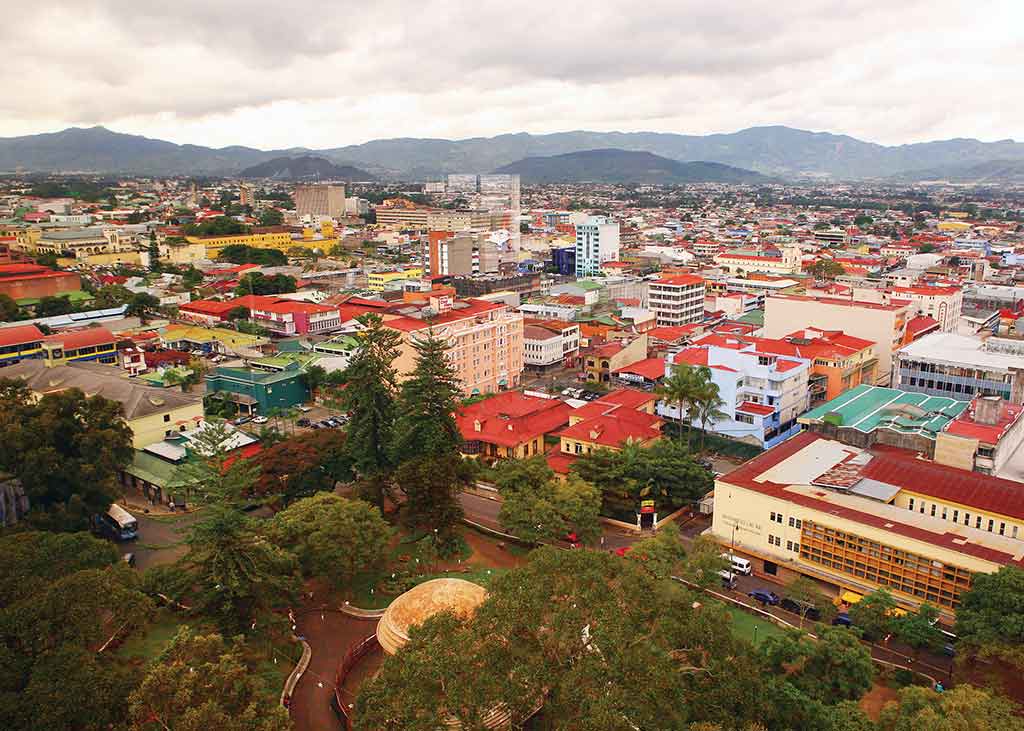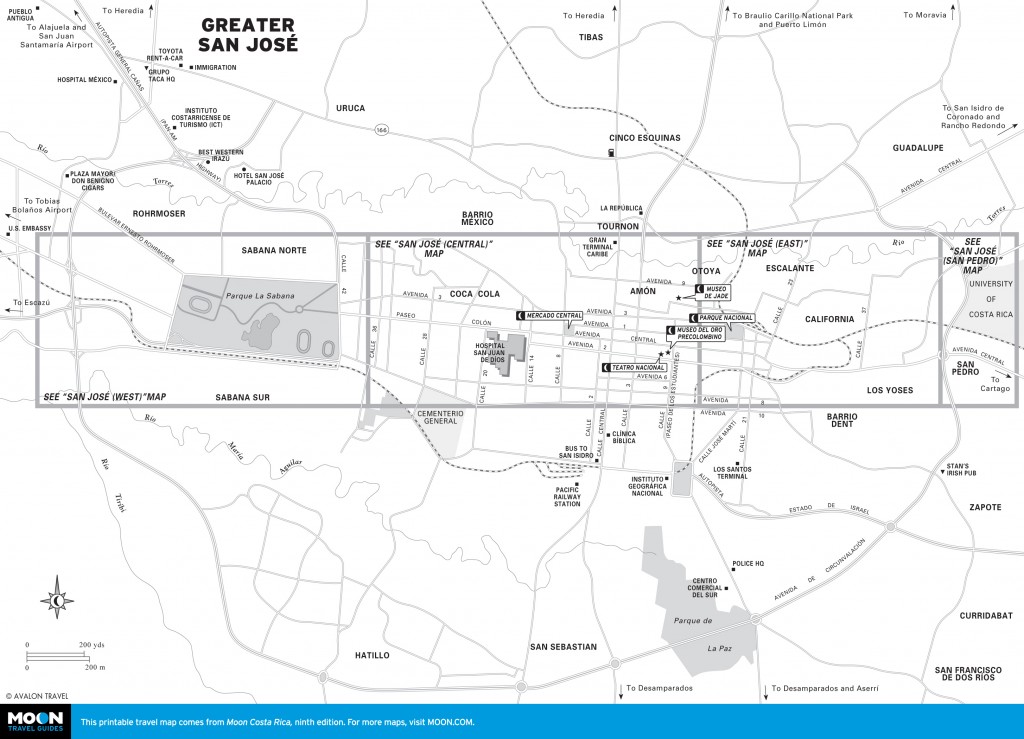San José, the nation’s capital, squats on the floor of the Meseta Central, a fertile upland basin 1,150 meters (3,773 feet) above sea level in the heart of Costa Rica. Surrounded by mountains, it’s a magnificent setting. The city’s central position makes it an ideal base for forays into the countryside, applying the hub-and-spoke system of travel—almost every part of the country is within a four-hour drive.

San Jose has a compact core, as seen from above Parque Morazan. Photo © Christopher P. Baker.
The city’s central position makes it an ideal base for forays into the countryside, applying the hub-and-spoke system of travel—almost every part of the country is within a four-hour drive.San José—or “Chepe,” as Ticos call it—dominates national life. Two-thirds of the nation’s urban population live in greater San José, whose 1.4 million people represent 30 percent of the nation’s population. San José is congested, bustling, and noisy. Its commercial center is dominated by hotels, offices, ugly modern high-rises, and shops. Uncontrolled growth in recent years has spread the city’s tentacles until the suburban districts have begun to blur into the larger complex.Although the city is not without its share of homeless people and beggars, there are few of the ghoulish tugurios (slums) that scar the hillsides of so many other Latin American cities. The modest working-class barrios (neighborhoods) are mostly clean and well ordered, and the tranquil residential districts such as Sabana Sur, San Pedro, and Rohrmoser have gracious houses with green lawns. Many streets in the older neighborhoods are still lined with one- and two-story houses made of wood or even adobe with ornamental grillwork. What few older structures remain are of modest interest, however: The city is almost wholly lacking the grand colonial structures of, say, Havana or Mexico City. If it’s colonial quaintness you’re seeking, skip San José.

Greater San José
Nonetheless, the city offers several first-rate museums and galleries. Despite its working-class tenor, the city is large enough, and its middle-class component cosmopolitan enough in outlook, to support a vital cultural milieu, which has surged in recent years. There are scores of accommodations for every budget, including backpacker hostels and one of the world’s preeminent boutique hotels. The restaurant scene is impressive, with dozens of globe-spanning eateries, including some exciting nouvelle options. Night owls will appreciate San José’s vivacious nightlife, from modest casinos to raging discos with Latin music hot enough to cook the pork.
The majority of visitors to the country spend one or two days in the capital city, whose bona fide visitor attractions can be counted on two hands. After a day or two, it is time to move on. You’ll appreciate basing yourself in a leafy residential district to escape the noise and bustle of downtown, where the major sights of interest are located.
Avoid driving in San José—despite the city’s grid system of one-way streets, finding your way around can be immensely frustrating. Downtown is compact and ideal for walking, with everything of interest within a few blocks of the center. Watch out for potholes, tilted flagstones, and gaping sewer holes. Be wary when crossing streets—Tico drivers give no mercy to those still in the road when the light turns green. Don’t take your eyes off the traffic for a moment. Stand well away from the curb, especially on corners, where buses often mount the curb.
San José has a high (and worsening) crime rate. Be especially wary in and around the Coca-Cola bus terminal (avoid the area altogether at night) and the red-light district south of Avenida 2 (especially between Calles Central and 10) and the sleazy zone northwest of the Mercado Central. Give a wide berth to Barrio Lomas, in the extreme west of Pavas; this is the city’s desperately poor slum area and the domain of violent gangs. Also avoid parks, especially Parque Nacional, at night. Don’t use buses at night, and be alert if you use them by day. Never walk around with a camera or purse slung loose over your shoulder.
Excerpted from the Tenth Edition of Moon Costa Rica.